Cultural Resources

CHILDREN’S DAY (BIRTH–AGE 12)
(VALUES THAT NOURISH CHILDREN)
CULTURAL RESOURCES
Sunday, July 22, 2012
Irene Smith, Guest Cultural Resource Commentator
Associate Pastor, Mt. Ennon Baptist Church, Clinton, MD
I. History
Few issues in the United States ignite controversy as consistently as the historical legacy of slavery.1 I’d like to pose a question: Were the iniquities, transgressions, and sins of our foreparents who were enslaved cast upon the third and fourth generations of African Americans? Were their iniquities, transgressions, and sins the reason for: 1. drugs, poverty, and crime in African American neighborhoods; 2. the high rate of death attributable to high blood pressure, cancer, heart conditions, and diabetes (all of which are treatable diseases); 3. the consistently high drop-out rate in African American high schools across the country; 4. the high incarceration rate of young African American males; and 5. the high number of African American families that are without men?
The answer is of course not! Our foreparents are not responsible for these social ills. They are the ones that our history tells us showed fortitude, i.e. the internal strength to endure, overcome, and continually make great strides in spite of brutal oppression.
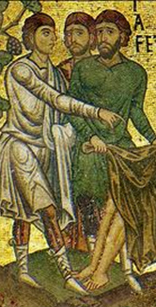 |
Using the curse of Ham, some have tried to attribute the adversities that African Americans endured to their skin color. By no means is this assertion true. I believe that many of the adversities faced by African Americans over the last almost four hundred years can be directly attributed to the evil that resided in the hearts of people, who through ill treatment sought to eradicate the value of a race by holding it in physical and legal bondage for perpetuity. |
 |
Even during slavery, Jim and Jane Crow, and the modern civil rights movement, our foreparents considered it important and essential to teach their children Christian values and how to live as dignified people of fortitude. Juan Williams writes in his book My Soul Looks Back in Wonder: Voices of the Civil Rights Experience, The sense of strength to escape stereotypes, to break free of the prison of low expectations, was supplanted in my mind by an awareness of where I fit in the historical arc of racial indignities and injustices spanning continents and centuries. It made me proud to think that black people had resisted degradation and insisted on their own inherent dignity in the face of such assaults on their sense of personal wealth.2 |
The Scripture used today from Exodus 34:5-7 can be misinterpreted and easily misunderstood. Any attempt to apply this text in a fashion that blames African Americans for their historic struggles in America would result in eisegesis (analyzing a text to reach a conclusion not supported by a text). This Scripture speaks of Moses in conversation with God as God is reconciling Israel back to him (God). Israel has bowed down and worshipped idols created with their own hands, idols they learned of while in captivity. Israel worshipped the idols of their captors after God declared, “I AM THAT I AM,” and brought them out of captivity, miraculously using a pillar of fire by night and a cloud by day to hide them from their pursuers. This same God had allowed them to walk through the Red Sea onto dry ground, and yet they are found worshipping the idols of their captors.
God descends and becomes manifest in the clouds and calls out to Moses. In this monologue, God speaks words of encouragement, words of love, and words of hope, and reestablishes his commitment to his nation. But, while expressing his covenant commitment to Israel, God declares that the guilty will be punished for their sins and their sins will impact generations yet unborn. The Israelites had failed to teach their children about the power of God, how he delivered them from the hands of a cruel Pharaoh who believed he was more powerful than God. The children of Israel had become captive to the voices of those who sought to turn them away from God.
 |
 |
 |
The African American child is currently bombarded by the voices of violence, the voices of those who are spewing hatred, the voices of those who preach, “Get rich by any means necessary,” that fast money is more important than education and delayed gratification, and the voices of those who promote promiscuity but never speak of all of the possible deadly consequences and long-term impacts. Children need help to fight such bombardment. |
The Greek philosopher Heraclitus said it simply: “Character is destiny.” Character shapes the destiny of an individual. It shapes the destiny of a society. “Within the character of the citizen,” Cicero said, “lies the welfare of the nation.” We need character to lead purposeful, productive, and fulfilling lives.” We need character to have safe and effective schools. We need character to build a civil, decent, and just society.3 Christian character is the glue that keeps the world from becoming a vast repository of evil.
II. Who Is to Blame for the Plight of Poor, Illiterate, and Unhealthy Children?
 |
 |
As we look at the last four generations of African American children and all of the ills that have beset them, who is responsible? Clearly, forces are perpetuating negative outcomes, conditions, and futures for our children. Who is responsible?
Well, there is more than enough blame to go around. First, there were courts, institutions, individuals, and economic and legal policies that handcuffed and battered at least two of the last four generations. Then, for at least the past two generations, there have been global economic and political forces that led death dealing efforts and benefitted when African American children smoke cigarettes, bully and shoot one another, drink sugary sodas and eat cholesterol-filled fast foods, use guns, drop out of school and go to jail, continually birth babies in poverty, and become drug dealers and drug users. We are aware of the profiteers that are unconcerned about peddling death.
 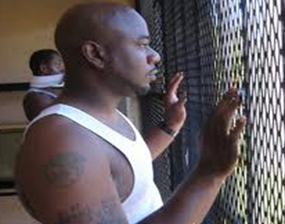 |
|
 | |
 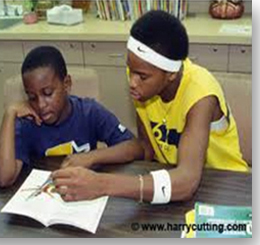
|
At least for the last two generations, there are so many churches that have not stood in the gap for children who were and are in trouble or are headed towards trouble. They did not and do provide latch-key services, exercise classes, educational tutoring, parenting classes, nutrition classes, food purchasing and preparation classes, abstinence and sex-education classes, and these are the easy things that they could have done and still can do. So, of course they do not run out billboard advertisers who peddle death in their communities or offer to mediate neighborhood disputes and meet with gang members or house or collaborate in programs for released offenders.
Then there are parents who do not do enough to safeguard their children from poverty, illiteracy, teen pregnancy, obesity, and more. They cede their responsibility to others who will never respond or whose responses will be lackluster, marginal, over-spiritualized, or hit-and-miss. These same parents also too often complain that life is really difficult and that they cannot find anyone to give them a hand up.
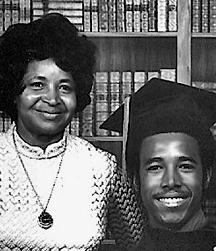 |
The story of the mother of neurosurgeon Dr. Benjamin Carson is relevant on this point. It is one that should be known by all who are rearing children under difficult circumstances. Sonya Carson married and divorced by age 19 and obtained only a third-grade education, but she made sure that her two boys would do better in school and in life than she had. She raised them as a single mother in Detroit while typically working two jobs. Once she realized that Benjamin was failing in school as a fifth grader she made drastic changes. She allowed him and his brother Curtis to watch only one hour of television a day, pretended to check their homework each night, and put check marks and highlights on the book reports that she made them do from the two books she made them get from the library each week and read. She pretended to check their work because she was not literate enough to read it. However, they did not know that until they had become lovers of reading and high-achieving high school students. Benjamin’s brother, Curtis, went on to become an engineer. Both boys were reared in church and remain active in the Church to this day. |
We know of thousands are stories just like this. Stories of poor and illiterate mothers and fathers who cared enough and devised unconventional strategies to make sure that their children succeeded. Parents cannot expect that governments, schools, churches, or anyone else will be responsible for ensuring that their children receive good educations and become persons of high moral character.
So, now that we know who is to blame for perpetuating negative outcomes, conditions, and futures for our children, what can be done to nourish within our children those divine attributes of God named in our text and discussed in today’s lectionary commentary? The values are: allegiance/loyalty to God first; mercifulness and graciousness; slowness to anger; the ability to love abundantly; faithfulness to God (which includes faithfulness to self, family, and community); and forgiveness.
III. Teaching Exercises for Children
An unknown author wrote,
This insight sets the tone for the lessons to be taught. All of the divine attributes above are character builders. Helping children obtain good character involves, among other things, teaching them to make good choices. So, our first exercises will focus on choices.
A. Teaching Children to Make Good Choices
Ages 3–5: Give children in this age group opportunities to think about the consequences of choices you will have them make. Begin with a simple activity called the Food Game. For the game, use pictures of sweet and sugary (candy, ice cream, cake, cookies, and candy bars) and pictures of vegetables (carrots, string beans, broccoli, tomatoes, cucumbers, and sweet potatoes) and pictures of healthy beverages (water and white milk) and other beverages (sodas, juice boxes, slushees, and lemonade). Indicate what equals a balanced diet and makes a child healthy; also use pictures of cavities to show the impact of tooth decay. Then, allow children to select what they want to eat and drink and have them tell why they made their selections. The choice teaching tool can be used for many other areas: to teach children how to select friends, how to embrace learning, how to decide to cooperate with parents and teachers, etc. The list is endless; it just takes some imagination on the part of church school teachers, parents, and schools. Anyone can use this exercise. It’s a great one for parents to use at home.
Ages 6–9: With older children, teach leadership through everyday examples to which this age group are exposed in classrooms, on playgrounds, in their families, and with their friends. Using the stories of biblical and African American personalities, discuss things such as honesty, keeping your word, completing a task, thinking for yourself (not following the crowd), and being considerate of others. Each story should be placed at the language and understanding acuity level of this age group. Select only short stories. Always use pictures and sound recordings, and make all of your lessons interactive. Make most of your stories about children who are 15 or younger so that your children can relate to them. Allow children to read sections of stories. Allow them to draw images of characters and images of situations such as siblings quarreling, characters finishing difficult tasks amidst difficult odds, and characters who showed leadership. Always allow as many children to speak as possible. Always congratulate all students on being on their way toward gaining the character trait you want them to exemplify, i.e., honesty, tenacity, forgiveness, love, etc. These exercises just take some imagination on the part of church school teachers, parents, and schools. Anyone can use this exercise. It’s a great one for parents to use at home.
Ages 9–12: This group is old enough to design their own projects with adult supervision. If you want children to learn how to avoid violence and be loving, let them help figure out how to do it. At this age, children already know many of the causes for violence. They also know how to design videos and images to promote non-violence. Use the web for ideas; it is filled with projects that have been successfully used by school teachers and church school teachers. You can put your own spin on any idea you select or let your kids put their spin on the idea.
Example: A teacher wanted to teach students to value money and become savers. She had students put on a sheet one expensive thing that they wanted to obtain and two things that were inexpensive to purchase. Students then had to obtain images and the cost of the items on their list and write brief essays on why they wanted the items. They next had to write brief essays and use images to talk about the financial state of their family. In many cases, students were not sure if their parents could afford the items. Students were told if they wanted the items, they had to earn them. Next, the teacher as a way of also teaching math, began to teach students about saving. A bank account was opened for each student by their parents and the students took a trip to visit banks; they also wrote essays about this. Next, each student was told that they had to develop ways to earn money to purchase the things on their list.
After they had begun saving and doing tasks to earn money, they were told that they could do a variety of things with whatever they earned—they could give it to poor children who needed it more than they did, they could give it to their parents to help with household needs, they could put it in the bank and save it, etc.
At the end of the three-month assignment, each student had earned and saved at least fifty dollars, completed five essays on money and saving, read three stories about people who amassed large sums of money through hard work, and visited a bank and opened a savings account. Only two of the students saved enough to purchase everything on their list; most had not properly estimated the costs of items and the time it took to earn the money to purchase them. Only one student purchased all of the items on his lists. Most students gave away some of their money, put some of it in the bank, and purchased the least expensive item on their list.
B. Character-building Exercises for Church Schools
Children need to be stimulated as lessons are taught. Teaching is not a monologue, where children just sit and listen. Rather, teaching today requires that children be placed in interactive roles for optimal learning. Teaching is also more than sitting a child in front of paper with crayons and asking them to color a picture while staying inside the lines. Exciting, vibrant, and animated teaching captures the attention of children and brings them into the pages of a lesson/story to help them better remember what they learned.
- Activity #1—Holla Back and Choose. Select a story from the life of Moses where God gives him instructions. After an instruction is read (by students if possible), have the students holler out, “ARE YOU LISTENING, MOSES”? This will make the story come alive. Then, after the instruction, have them guess what Moses did next. Then have them holler out, “WHAT CHOICE DID HE MAKE?” After letting them state the choice(s) he made and the consequences, relate it/them to similar choices that your students will have to make and let them offer possible consequences depending upon the choices they make. When they leave the class, they will remember the stories better, but more importantly they will learn about the importance of making good choices.
- Activity #2—Hard Choices. Each child is asked a series of character-building questions, then is asked to choose what is the right response and why. Examples: You see someone (a classmate, a person in a store, someone on the street) drop their money but they don’t know it, what should you do and why? If you see two students fighting after school, what should you do and why? If you see someone stealing in school, what should you do and why? Ask them, “Will it matter if the student if bigger than you?” “Will it matter if no one believes you?” “Will it matter if you could be harmed physically if the student who stole finds out you told?”
- Activity #3—What IF? Discuss with children how the world looks because of good choices (show images, with sound if possible). Then ask them, “What if people decided to do the wrong thing, what could happen?” Give them some suggestions to think about and have them draw or create via computer or tablets the outcomes. For example, WHAT IF no one obeyed street signs and signals? WHAT IF no one obeyed police officers? WHAT IF no one put litter where it belongs? WHAT IF no one washed their hands after leaving a restroom? WHAT IF no one read their Bible? WHAT IF no one helped the homeless?
- Activity #4—Doing the Right Thing. Younger children (K4/K5 through grades 2) are given cardstock paper that contains pictures of children doing the right thing along with pictures of children doing the wrong thing. Children have to circle the correct response and share why they made the decision they made.
IV. Lessons from Our Foreparents (More Values That Nourish Children)
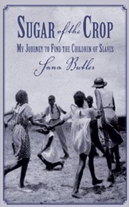 |
In Sugar of the Crop: My Journey to Find the Children of Slaves,4Sana Butler writes how it became her mission to identify African Americans who were born during slavery. As she interviewed these individuals, who were in their 90s or older, she learned that although life was often brutally difficult, they managed to stay focused on living. The individuals she interviewed spoke about the importance of education, about respect for their elders, and about making good choices not just for them but for their family members and their community. If we hold on to the values of our foreparents, we will promote the value of education. More importantly, we will teach and promote godly character. |
God wanted Israel to make the right choice, and that was to serve Him and follow His Commandments. For the African American, it is God that was and forever shall be our sustainer, our deliverer, and our compass. The Almighty has allowed our people to achieve so much, with so little, with help from so few. If we forget, like Israel did, if we fail to educate our children with godly character, then we will find ourselves in bondage again, but this will be bondage by our agreement and partly of our own creation. James Weldon Johnson wrote in “Lift Every Voice and Sing,” which has become known as the Black National Anthem, words that we must never forget,
We must teach our children wisdom, an essential element, if we are to nourish in them Christian values. Our foreparents were mainly illiterate, not allowed to read by law in most states, and too poor to pay tuition and harmed and hassled in those states where they were allowed to read. However, through prayer, ingenuity, and soaking up knowledge where they could, they harnessed enough divine wisdom to start businesses and build schools, churches, and colleges. This is why the choices exercise given above is important. Once a child learns the importance of making godly decisions, they can begin to understand the fundamental element of wisdom (making godly choices).
We must teach our children fortitude, not giving in and giving up. Fortitude is what our children will need when they get knocked down. It will give them the strength to get up and try and try again until they achieve success. Children need to learn early that life is not always fair, that victories are not always easy to obtain, and that failure happens in life. Our ancestors wrote the book on fortitude. They survived lynchings, rapes, beatings, sharecropping, having their land taken from them, and hundreds of years of laws that were stacked against them, and they still prevailed. Our children, even those in harsh circumstances, need to be reminded of what their people have endured and survived.
We must teach our children gratitude. Everything that we have comes from God, and our children need to learn the importance of being thankful for the many blessings of which they are daily recipients. At the earliest possible age, children must be taught that things such as having a place to live, food, clothes, health, parents who work hard, and a loving and forgiving God, are not things that they can take for granted. Teach children at the earliest possible age to say thank you, to send thank you notes and cards, and to show appreciation for those who aide them in life and importantly thanks to God for all good gifts.
V. Songs That Speak to the Moment
Verse 1:
God made me in His image,
He made me just like Him;
eyes to see and ears to hear,
and He put movement in my limbs.
Chorus:
I owe Him my all,
I cannot let Him down
for He’s the one that died for me
and now I can tell the world salvation is
free, free, free.
Verse 2:
God made me,
He gave me victory.
He died on Calvary
and now salvation is free.5
I am a promise
I am a possibility
I am a promise with a capital “P”
I am a great big bundle of potentiality
And I am learning to hear God’s voice
And I am trying to make the right choice
I am a promise to be anything God wants me to be.
I can go anywhere that He wants me to go
I can be anything He wants me to be
I can climb the high mountains
I can cross the wide sea
I’m a great big promise you see!
I am a promise
I am a possibility
I am a promise with a capital “P”
I am a great big bundle of potentiality
And I am learning to hear God’s voice
And I am trying to make the right choice
I’m a promise to be anything God wants me to be
Anything God wants me to be!6
V. Poetry (Affirmations for Children)
I close this Children’s Day cultural resource unit with a series of affirmations for children to repeat; these are great to have parents and children do at home. Sections and lines can be taught to children as the children age. Children can also create posters containing some or all of the affirmations. These posters can be simple or highly creative pieces of art. This is a project for ages 4–12. Your church could allow children to present their art work during a church service and or place it on display in areas of the church.
WHO AM I?7
I am somebody!
I am bright, capable, and lovable.
I am teachable and learn easily.
I tell the truth and am a gentle listener.
I respect myself and others.
I am cooperative and responsible for my feelings and choices.
I see the highest and best in myself and others and support that with my
thoughts, words and actions.
I use time wisely because it is valuable.
I am the best me I can be each day.
I am fearfully and wonderfully made, I am not a mistake.
I am not a mistake.
I will not accept your judgment of me; because God’s Word declares
I am a victor, a winner, and not a loser.
I can do all things through Christ Jesus who strengthens me.
I am walking in my destiny.
I will not be deterred.
My future is bright.
I will not be deterred.
I see beyond my surroundings.
I will not be deterred
I am beautiful, I am confident; I am a Child of the Most High God.
I will not be deterred.
I am who God says I am
wonderfully and marvelously made.
I will not be deterred.
| —Michael Ryce |
Notes
1. Roberts, Kevin. African American Issues. Westport, CT: Greenwood Press, 1974. p 1.
2. Williams, Juan. My Soul Looks Back in Wonder: Voices of the Civil Rights Experience. New York, NY: Sterling, 2005.
3. Lickona, Thomas. Character Matters. New York, NY: A Touchstone Book, 2004.
4. Butler, Sana. Sugar of the Crop: My Journey to Find the Children of Slaves. New York, NY: The Lyons Press, 2009.
5. “God Made Me.” By Jules Bartholomew. The Mississippi Mass Choir: Then Sings My Soul. Jackson, MS: Malaco, 2011.
6. “I Am a Promise.” By William Gather. Daywind Kidz Soundtrack: I Am a Promise. Nashville, TN: Daywind Music Group, 2004.
7. The affirmation by Dr. Michael Ryce has been paraphrased for use in this material.




